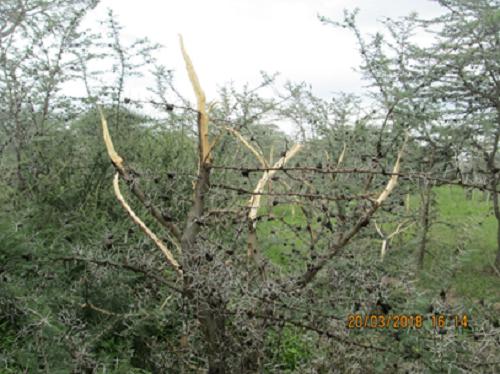Houssein Samwell Kimaro
Other projects
21 Apr 2023
Influence of Woody Plant Encroachment on the Prevalence of Gastrointestinal Parasites in Pasture
Habitat degradation, caused particularly by woody invasion, has been common phenomenon in savanna ecosystems. Poor land management such as overgrazing and frequent fire has been associated possible factors triggering woody plant encroachment. Currently, little is known about why and how woody plant seedlings can easily proliferate and spread and roles wildlife and livestock play in this process. This study wills investigates how native plant species and their soil seed bank are affected by bush encroachment in an area bordering the Serengeti National Park and Ngorongoro Conservation Area. External factors that might trigger seedling germination, growth and proliferation of the two most dominant bush encroacher species will experimentally be tested. Such factors included in treatments are ingestion of seeds by livestock and wildlife as well as fire regime and rainfall. This study will highlight underlying factors contributing to bush encroachment and provide management suggestions to local pastoralists and wildlife managers.

Acacia drepanolobium sapling growing out of Elephant dung.
Habitat degradation, caused in particular by woody species invasion, has been a common phenomenon in savannah ecosystems. Poor land management such as overgrazing and frequent fire has been named as possible factors triggering this encroachment. Often, wildlife and livestock in both protected areas and communal rangelands suffer due to decreased grazing resources. Particularly the areas bordering the Serengeti, harbouring the Great Wildebeest Migration, are severely affected by bush encroachment. While the impact of bush encroachment has been investigated in various studies, little is known up to now about why and how woody plant seedlings can so easily proliferate and spread and what factors wildlife and livestock play in this process.

Acacia drepanolobium which has been browsed by African elephant (Loxodonta Africana). Contrary to scientific publication by Goheen experimented in 2010, Kenya.
This study will investigate how the native plant species and their soil seed bank are affected by bush encroachment in an area buffering the Serengeti National Park and Ngorongoro Conservation Area. We will collect soil from three bush encroachment categories, i.e., heavily encroached, moderately encroached and no encroachment, which will indicate how well the native species abundance remains intact. We will establish three study sites each per encroachment level in Maswa Game Controlled Area, within the Serengeti ecosystem. Further, we will experimentally test external factors that might trigger seedling germination, growth and proliferation of the two most dominant bush encroacher species, Acacia seyal and Acacia drepanolobium. Different treatments will include ingestion of seeds by livestock and wildlife as well as fire regime and rainfall. Fresh livestock and wildlife dung containing seeds of these two species will be collected in the study site and the seeds will be planted with and without dung as medium. These seeds will be subjected to a second treatment, i.e., bush fire and irrigation, to understand whether these environmental factors enhance re-sprouting of these bush encroachers. We will use a generalized linear model to test the single treatments and in combination.
Our results will highlight the importance of wild and domestic herbivores as seed dispersers that might contribute significantly to bush encroachment in rangeland areas. With our study, we will highlight the underlying factors contributing to bush encroachment and, thus, we will be able to provide management suggestions for the local pastoralists and wildlife managers. Further, an understanding of the bush encroachment processes from seedling stage onwards will help suppress bush encroachment in Maswa Game Reserve and support conservation of two world heritage sites and migratory corridor of the Great Wildebeest Migration in the Serengeti Ecosystem.